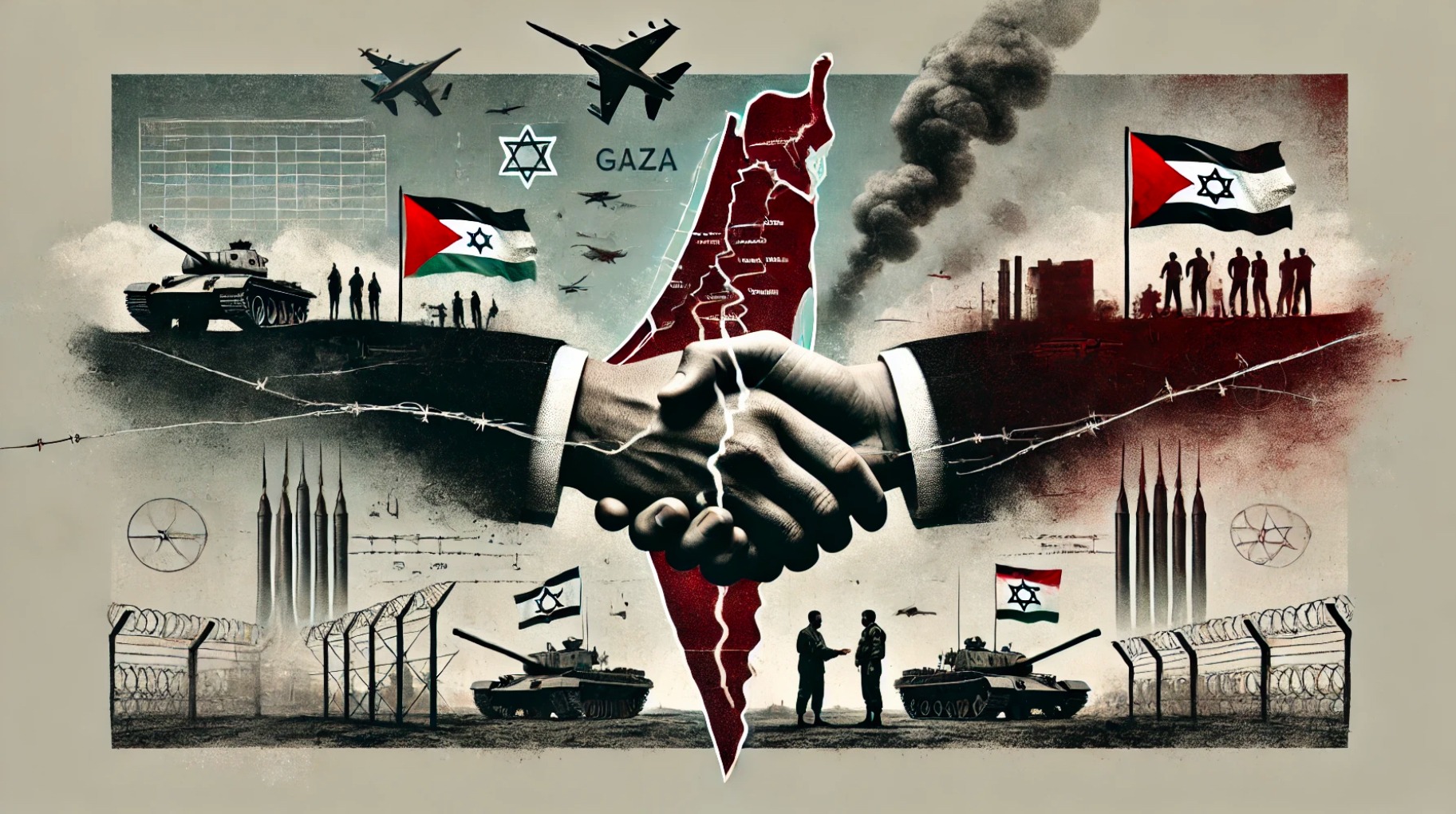The escalation of violence between Israel and Hamas has led to a worsening humanitarian crisis in Gaza. Recent Israeli airstrikes have intensified the conflict, with aid deliveries suspended due to security concerns. This article provides an in-depth analysis of the situation using key international relations frameworks, exploring the root causes, ongoing challenges, and implications for global diplomacy.
The Role of Leadership in the Gaza Crisis
The decisions of key leaders are driving the trajectory of this conflict. Israeli Prime Minister Benjamin Netanyahu has emphasized military strategy to neutralize Hamas, prioritizing security over humanitarian considerations.
Meanwhile, Hamas leaders have continued to operate from civilian areas, further complicating efforts to differentiate combatants from non-combatants. These choices at the individual level showcase how leadership decisions escalate violence and increase civilian suffering.
State-Level Dynamics: Security Versus Sovereignty
At the state level, Israel’s actions reflect a security-first approach. The ongoing airstrikes aim to deter Hamas but have resulted in significant civilian casualties and infrastructure destruction. In contrast, Gaza, under the governance of Hamas, faces internal challenges like fragmented authority, with looting of aid supplies disrupting relief efforts. These dynamics highlight the difficulties of governance in conflict zones and the competing priorities of security and sovereignty.
The International Dimension: Diplomacy and Global Implications
The international response to the Gaza crisis remains divided. Egypt’s role as a mediator in ceasefire talks underscores its strategic interest in maintaining stability on its borders. At the same time, international organizations like the United Nations have condemned the violence and the suspension of aid, emphasizing the importance of humanitarian assistance. Yet the lack of consensus among global powers limits the effectiveness of these efforts, prolonging the crisis.
A Historical Perspective on the Gaza Conflict
The current crisis is rooted in decades of territorial disputes and unresolved issues between Israel and Palestine. Gaza’s blockade since 2007 has created a dire humanitarian situation, with repeated escalations failing to address long-standing grievances. Historically, ceasefires have provided temporary relief but have not resolved fundamental disagreements over borders, governance, and refugee rights. This historical context explains why current diplomatic efforts face significant hurdles.
Geopolitical and Economic Challenges
Gaza’s geographic location between Israel and Egypt makes it a focal point for regional tensions. Israel’s military strategy is influenced by the proximity of Gaza to major cities, raising security concerns that drive aggressive actions. Economically, the blockade has devastated Gaza’s infrastructure, creating a dependency on foreign aid. The suspension of aid shipments has further destabilized the region, compounding the challenges for civilians and aid organizations alike.
Political, Economic, Social, and Cultural Impacts
The Gaza conflict illustrates the interconnected impacts of political, economic, social, and cultural factors. Politically, Netanyahu’s government faces domestic pressure to act decisively while contending with international criticism for the humanitarian toll. Economically, aid suspension and infrastructure destruction have deepened Gaza’s crisis. Socially, civilians continue to bear the brunt of the conflict, facing displacement, casualties, and worsening living conditions. Culturally, the conflict exacerbates divisions, eroding trust and further alienating the Palestinian population.
Balancing Military Strategy and Humanitarian Needs
The suspension of aid in Gaza reflects the inherent tension between military objectives and humanitarian imperatives. International actors must work to establish protected corridors for aid delivery, ensuring the safety of humanitarian workers and civilians. Diplomatic efforts must also intensify to enforce ceasefires and address the root causes of the conflict, such as border security and economic stability. Both sides must be held accountable for violations of international law to rebuild trust and prevent further harm.
Theoretical Analysis: Realism and the Gaza Crisis
The Gaza conflict is best analyzed through the lens of realism, a theory in International Relations that focuses on the anarchic nature of the international system and the centrality of power and survival in state behavior. Realism provides a framework for understanding the actions of both Israel and Hamas, as well as the responses—or lack thereof—from international actors.
Realism posits that in a world without a central governing authority, states prioritize their own security and interests above all else. In this case, Israel’s aggressive military strategy aligns with the realist principle of deterrence, which aims to secure its borders and neutralize perceived threats. The strikes on Gaza, while criticized internationally, reflect Israel’s prioritization of immediate survival and national security over humanitarian considerations. From a realist perspective, this is a rational choice in an anarchic system where state sovereignty and survival are paramount.
Hamas’ actions also fit within this framework. As a non-state actor governing Gaza, Hamas operates as a rational actor seeking to maintain its power and legitimacy. Its use of civilian areas for military operations, while controversial, can be seen as a survival tactic within the asymmetric nature of the conflict. This further underscores the realist notion that actors, whether states or non-state entities, will act in their self-interest when facing existential threats.
International responses—or their absence—also demonstrate the validity of realism in this analysis. While institutions like the United Nations condemn the violence, their lack of enforcement mechanisms highlights the anarchic nature of the international system. States, including Egypt and other mediators, act based on their own interests, prioritizing regional stability over humanitarian needs. The fragmented and self-interested behavior of global powers reinforces realism’s argument that cooperation is limited and often secondary to power dynamics.
By focusing on the motivations and actions of the key actors involved, realism offers a clear explanation for why the Gaza crisis continues to escalate. Both Israel and Hamas are acting within the constraints of an anarchic system, prioritizing power and security over collaboration or adherence to international norms. This theoretical lens highlights the challenges of achieving meaningful resolution in a conflict driven by survival instincts and power struggles.
Conclusion: A Path Toward Resolution
The Gaza crisis highlights the urgent need for a balanced approach that prioritizes both security and humanitarian needs. History has shown that military solutions alone cannot resolve deeply rooted disputes. As the global community watches, the question remains: will this crisis push stakeholders toward a sustainable resolution, or will it deepen existing divides?
Meaningful progress, international cooperation, effective diplomacy, and a commitment to protecting human rights are essential.
References
- Israeli strikes kill at least 200 in Gaza as UN halts aid deliveries after more trucks stolen. (2024, 1 diciembre). CNN. https://edition.cnn.com/2024/12/01/middleeast/israel-strikes-gaza-aid-halted-intl/index.html
- Camisão, S. A. A. I. (2018, 5 agosto). Introducing Realism in International Relations Theory. E-International Relations. https://www.e-ir.info/2018/02/27/introducing-realism-in-international-relations-theory/
- BBC News. (2024, 5 abril). Israel Gaza war: History of the conflict explained. https://www.bbc.com/news/newsbeat-44124396









No responses yet